Stress
Let’s start with something simple. Let’s visualize a pressure applied on an object.
The pressure is causing a certain deformation to your object.
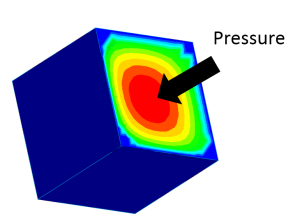
After I applied the pressure, what is happening inside the object?
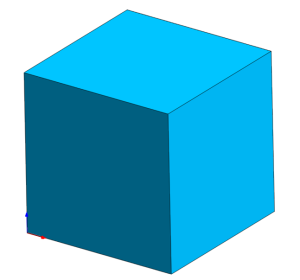
Let’s assume the object is composed of a lot of smaller cubes.
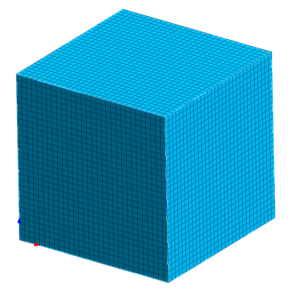
What is actually happening to one of the small cubes inside the solid when I apply the external force?
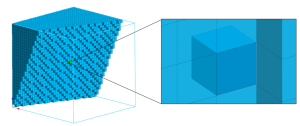
You see what happen? The small cube that I chose is actually surrounded by identical cubes.
Any external load will be transmitted to the cube inside through other cube.
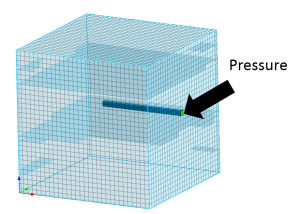
So the cube in the middle is actually submitted to some loads because of the cubes around him which are also receiving a load from cubes around them.
Here is the cube and the pressures applied on all its faces
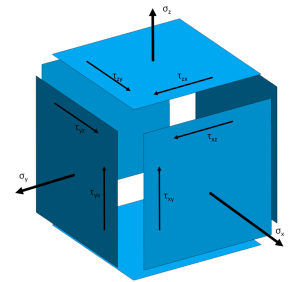
From this picture you see that each face of the cube actually receives a pressure load.
What is called stress is the value of this load divided by the surface (same unit as a pressure).
Normal stress σ is the stress applied normally to the face (as the name indicates)
Shear stress τ is the stress applied in the same plane than the face.
What about stress in a continuous solid?
Suppose that you reduce the size of the cube until it becomes so small that it actually becomes a point:
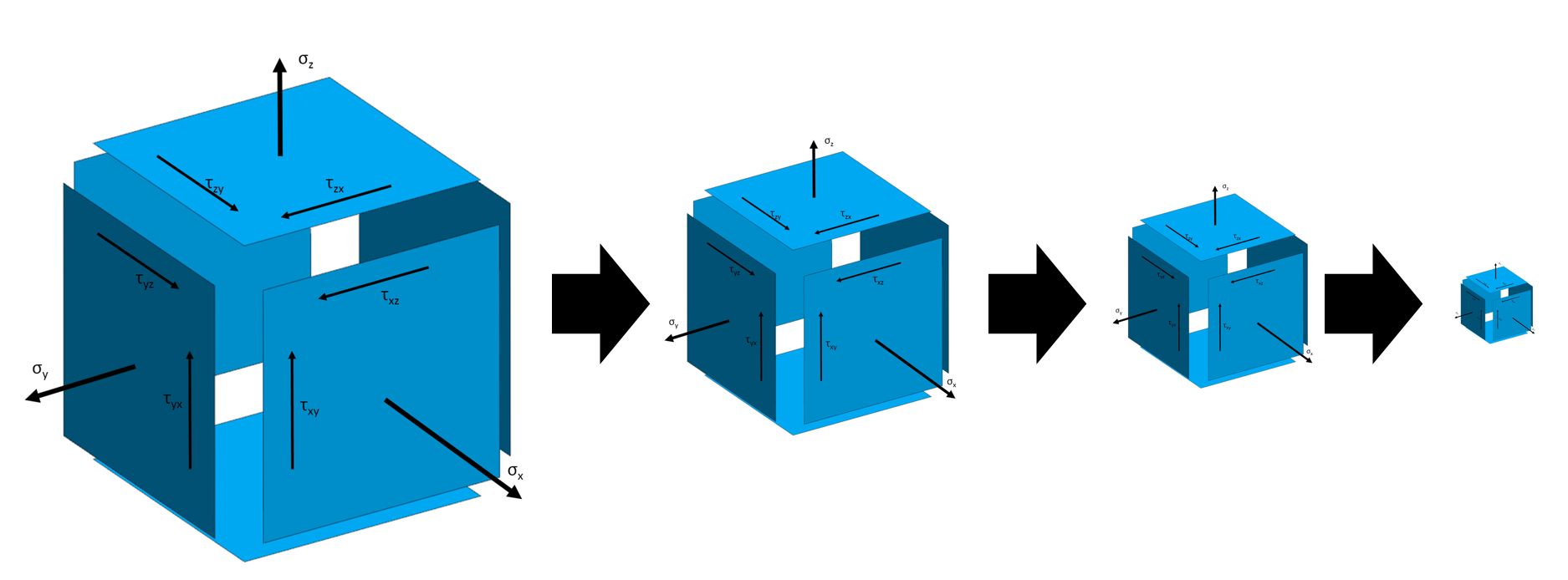
Now see this point inside your solid continuous volume and imagine that whatever the direction you calculate the stress at this point, you just have to imagine a plane that is perpendicular to that direction and then you obtain your 3 components that I mentioned before.

If you like this article, please let a comment, I will write more articles like that.
If you are interested in Simulation on computer, check also this article about the difference between CAE simulation and CAD.
Sometimes it’s good to come back to the basics to understand really how things work!
I admire your cleverness. You have a good skills to say simple words for a difficult task. I would say, like A. Einstein „Everything should be made as simple as possible, but not simpler.”
Thanks Jarek! I think that sometimes people don’t understand things because it hasn’t been properly explained to them. Everything can be easily understood if we come back to the most simple principals and we remove the fancy words.
An interesting article, that makes a great introduction to the stress tensor. We see how the isostatic pressure and deviatoric components of the tensor appear.
Nice explain of stress.
Im still an emerging engineer in the pressure vessels industry. This article has made me imagine stresses in a whole different and simpler way.
Thankyou for all the time you put into this and other FEA articles. It makes a difference out there.
Thank you so much Sumit! I am really happy to hear that you benefited from this article and that you have now a better understanding about the topic. This is exactly why I am writing those articles.
Good article,Stress is the ability of material to resist the deformation due to external load!
It easy and simple to understand by an engineer ,i am ok and this is fine for me to understand.
Good Explanation. Recently I come across a question on Quora that stress generated in any material is same for identical geometry and loading condition (he said stress is F/A and not depend on material from formula). But as F is not external force but internal so stress generated should be different for different material even geometry and loading condition remains same.As. different material should exert different resistance.
What do you think about this ?